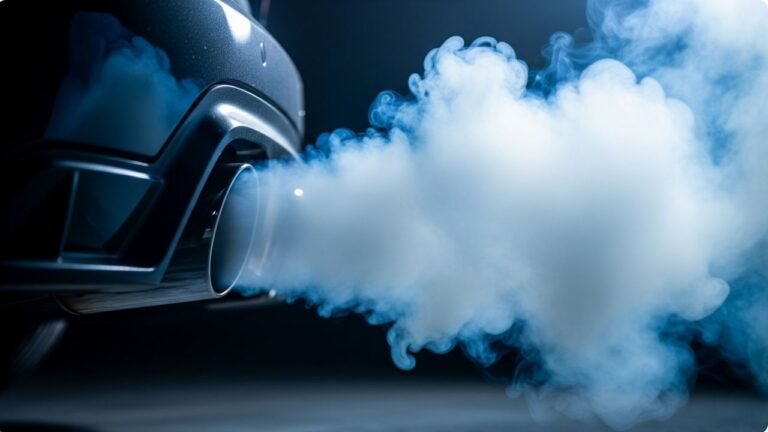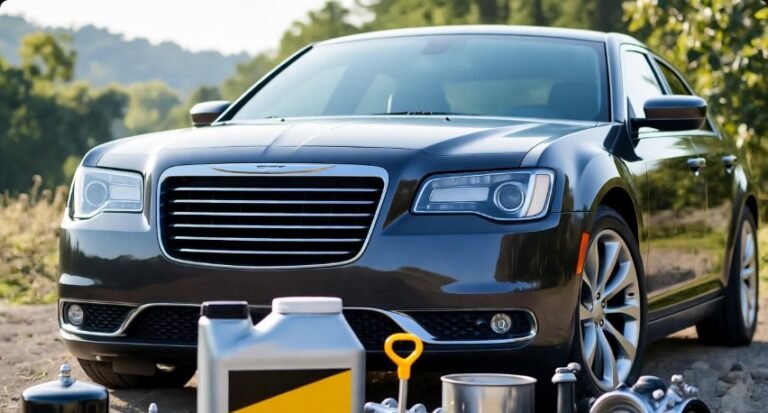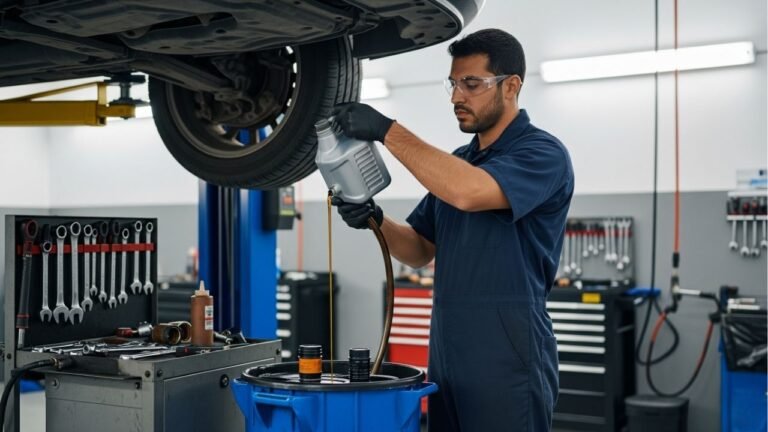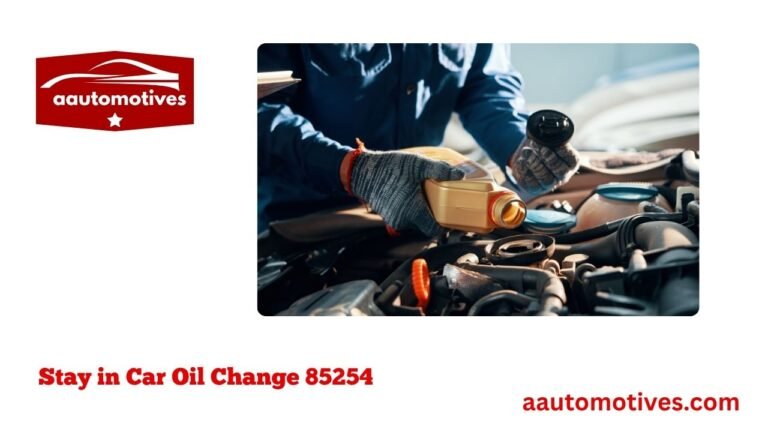What Causes Oil and Water to Mix in a Car
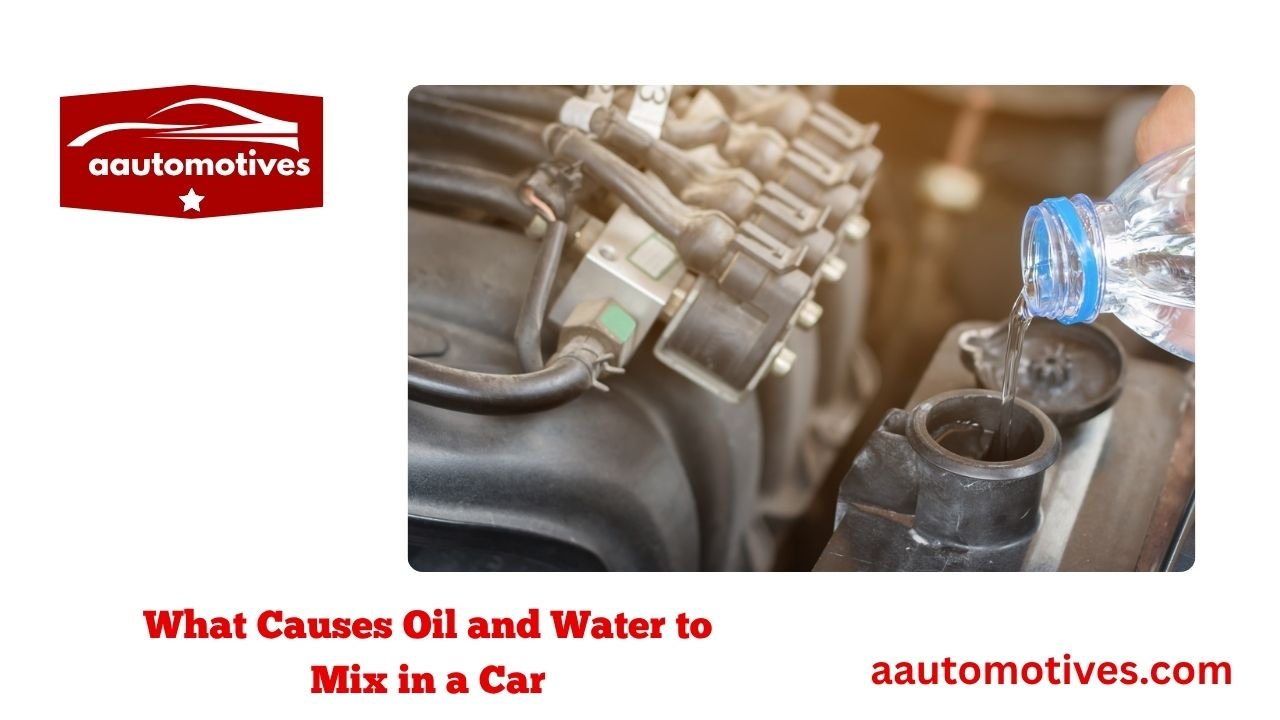
Ever popped your car’s hood and seen something that looked like a chocolate milkshake inside the oil cap? That thick, gooey mess isn’t a new automotive smoothie — it’s a red flag. It means oil and water are mixing in your engine, and trust me, that’s never a good sign.
This situation may seem small at first glance, but it’s actually a silent killer for your engine. It can start with a little overheating, a cracked gasket, or even corrosion from years of driving in harsh weather. But once it starts, it quickly becomes a costly, complicated repair job — something I’ve personally learned the hard way.
In this article, we’re going to explore what causes oil and water to mix in a car, how to recognize the signs, what it means for your engine’s health, and what you should do about it. I’ll break down the science, share real-life examples, and keep it as simple and relatable as possible.
The Role of Oil and Water in Your Engine: Two Essential, But Separate Fluids
Oil and water serve critical but completely different purposes in your car’s engine:
-
Engine oil lubricates moving parts, reduces friction, and helps manage heat.
-
Coolant (water mixed with antifreeze) keeps the engine from overheating by absorbing and dissipating heat.
Under normal conditions, these two never mix. In fact, your engine is specifically designed to keep them apart. Oil flows through one system; coolant flows through another. They’re like two roommates who need their space — one in the kitchen and one in the living room.
So when oil and water start mixing, it means the barrier between these systems has failed. And when that happens, it doesn’t just impact performance — it threatens the very life of your engine.
Head Gasket Failure: The Most Common Culprit
If I had a dollar for every time someone brought in their car with milky oil due to a blown head gasket, I’d probably be writing this from a beach.
The head gasket sits between the engine block and the cylinder head. Its job is to seal the combustion chamber and keep oil and coolant in their respective places. When this gasket fails, it opens a gateway for oil and coolant to cross-contaminate.
Here’s how it happens:
-
Overheating warps the metal, damaging the gasket.
-
Wear and tear cause the seal to break.
-
Poor-quality gaskets break down over time, especially in older engines.
And then — boom — you’ve got oil mixing with coolant and possibly entering the combustion chamber.
You’ll often see:
-
White smoke from the exhaust
-
Engine overheating
-
Milky oil on the dipstick or under the oil cap
-
Coolant disappearing without a visible leak
This is no small issue. Left alone, a blown head gasket can lead to complete engine failure.
Cracked Engine Block or Cylinder Head: The Nightmare Scenario
While head gasket failure is common, a cracked engine block or cylinder head is far worse — both in severity and repair cost. It’s like discovering a termite infestation in your home’s foundation.
Extreme engine overheating or freezing temperatures can crack the metal in these components. Once that happens, coolant and oil can leak into each other’s passageways.
Here’s a visual metaphor: Imagine a dam with small cracks. Water starts seeping through. At first, it’s just a trickle. But over time, the damage grows. One day, the whole thing gives out.
Symptoms are very similar to a blown head gasket — overheating, loss of coolant, milky oil — but with added risks like:
-
Oil leaks on the outside of the block
-
Coolant bubbling in the overflow tank
-
Engine misfires and loss of compression
Cracks are much harder to diagnose and almost always require professional tools like dye tests or pressure tests. Repairing this usually means replacing the engine or at least the affected component.
Worn or Damaged Oil Cooler: A Hidden Source of Contamination
Now, here’s one that even seasoned mechanics sometimes overlook: the engine oil cooler.
Not all cars have one, but those that do rely on it to regulate oil temperature. This small component often runs engine oil alongside coolant in a heat exchanger — separated by thin metal walls.
If these walls corrode or break, the fluids start mixing inside the cooler. You’ll get the same milky oil symptoms, but no signs of a head gasket leak or block crack.
I once worked on a BMW where everything seemed fine — compression was perfect, no overheating — but the oil looked like cappuccino. Replacing the oil cooler fixed the issue instantly.
That experience taught me a valuable lesson: never overlook the simple stuff.
Faulty Intake Manifold Gasket: A Subtle but Serious Issue
The intake manifold gasket seals the intake manifold to the engine and ensures proper airflow. In many vehicles — especially V6 or V8 engines — coolant also flows through the intake.
When this gasket fails, coolant can leak into the intake ports or the oil passages. This is especially common in older GM engines and some Ford models.
Signs include:
-
Coolant loss with no obvious leak
-
Engine misfires
-
White smoke or steam from the exhaust
-
Contaminated oil that smells sweet or appears foamy
It’s not as catastrophic as a cracked block, but it can still cause long-term damage if not caught early.
Quick Comparison of Common Causes
| Cause | Primary Symptom | Repair Difficulty | Estimated Cost (USD) |
|---|---|---|---|
| Blown Head Gasket | White smoke, milky oil | Moderate to high | $800 – $2,000 |
| Cracked Engine Block | Coolant in oil, misfires | Very high | $2,500 – $5,000+ |
| Faulty Oil Cooler | No power loss, creamy oil | Low to moderate | $300 – $800 |
| Intake Manifold Gasket | Coolant loss, misfire | Moderate | $400 – $1,200 |
What It Feels Like When It Happens to You
When it happened to me — my old Honda Civic, late one summer — I didn’t realize the signs fast enough. It started with occasional overheating. Then came the coolant loss. Eventually, I opened the oil cap and saw that dreaded brown foam.
It was gut-wrenching. That car had been with me through college, road trips, breakups — it was practically family. Watching it break down felt like losing an old friend.
But it taught me something important: listen to your car. It always tells you when something’s wrong. You just need to know how to hear it.
Can You Still Drive When Oil and Water Mix? Spoiler: Don’t Do It
When oil and water mix in a car, it’s tempting to ignore the signs and keep driving — especially if the car still runs. But here’s the blunt truth: every mile you drive with mixed oil and coolant is doing irreversible damage.
Think of it like brushing your teeth with sand instead of toothpaste. It might feel like you’re getting by, but the internal damage is immense.
Here’s what happens:
-
Contaminated oil loses its lubricating power. That means more friction, more heat, and faster wear on engine parts.
-
Coolant in the oil can corrode bearings, pistons, and even your crankshaft.
-
Overheating becomes more frequent, which can lead to warped engine components or total failure.
Driving in this condition is like sprinting on a broken leg — sure, you might make it a bit farther, but at what cost?
Can You Fix It Yourself or Should You See a Mechanic?
This depends on what’s actually causing the issue. Some fixes are doable at home if you have tools and some experience. Others require serious mechanical skills — or a lift and engine hoist.
Let’s break it down:
DIY-Friendly Fixes:
-
Replacing an oil cooler: If you’ve diagnosed a faulty oil cooler, it’s often just a matter of removing the unit and replacing it. Tools needed: ratchet set, new gaskets, torque wrench.
-
Flushing contaminated oil: If caught early, draining and flushing the oil and coolant can prevent damage, especially after small leaks.
Professional Help Needed:
-
Blown head gasket: Requires taking off the head, cleaning surfaces, and torqueing everything back to spec. One missed bolt or improper torque — and the whole thing fails again.
-
Cracked block or cylinder head: This is major surgery for your engine and may even need engine replacement.
-
Intake manifold gasket: While technically possible for experienced DIYers, it’s often better left to the pros due to the labor involved.
My rule of thumb: If it involves breaking into the engine, get help. It might cost more upfront, but it’ll save you from wrecking the motor entirely.
Preventing Oil and Water from Mixing: Smart Habits Save Engines
Prevention is way cheaper than repair. Always has been, always will be.
Here are some simple but effective ways to keep oil and coolant where they belong:
-
Keep an eye on your temperature gauge. Never ignore signs of overheating.
-
Change coolant and oil regularly. Old coolant becomes corrosive and can wear out seals and gaskets.
-
Use quality parts. Cheap gaskets or hoses are more likely to fail.
-
Don’t skip regular inspections. Ask your mechanic to pressure test the system or do a block test during routine service.
-
Check for leaks monthly. A quick glance at your oil cap and dipstick can catch early warning signs.
These steps don’t take much time — but they can save your car’s life.
Real-World Story: The Mazda That Just Wouldn’t Quit
One of my favorite success stories comes from a friend who drove a 2008 Mazda 6 with over 200,000 miles. One day, he called me in a panic — white smoke was pouring from the tailpipe, and the oil cap looked like a latte. Classic signs of oil and coolant mixing.
We popped the hood, ran a few basic tests, and quickly found the culprit: blown head gasket.
He was ready to junk the car. But I encouraged him to fix it instead. We got a gasket set, new head bolts, and tackled the repair in his garage over two weekends.
Fast forward to today — that car is still running, still smooth, and he hasn’t had an issue since.
The lesson? If you catch the problem early and approach it properly, it doesn’t have to mean the end of your car.
Emotional Toll: It’s More Than Just a Mechanical Problem
I know it sounds strange, but when oil and water mix in a car, it can feel deeply personal. Your car is your daily companion. It gets you to work, helps you travel, maybe even saved you during emergencies.
So when it starts failing — especially due to something so technical and hidden — it can feel like a betrayal.
You start questioning everything:
-
Did I push it too hard?
-
Should I have noticed the signs earlier?
-
Can I afford to fix this?
You’re not alone. We’ve all been there. That blend of stress, regret, and helplessness is something only car owners truly understand.
The key is to stay calm, ask for help when needed, and remember: cars can be fixed. Emotions might run high, but solutions are always within reach.
FAQs: Quick Answers to Common Questions
1. What causes oil and water to mix in a car most often?
The most common cause is a blown head gasket, which allows coolant and oil to leak into each other’s systems.
2. Can you drive a car with oil and water mixed?
Technically yes, but you absolutely shouldn’t. It leads to severe engine damage and skyrocketing repair costs.
3. What does oil look like when it’s mixed with coolant?
It appears milky, frothy, or like chocolate milkshake under the oil cap or on the dipstick.
4. Is fixing a head gasket expensive?
Yes. It usually ranges from $800 to $2,000, depending on the car and labor rates.
5. Can a bad radiator cause oil and water to mix?
Not directly. But if the oil cooler inside the radiator fails (in some cars), it can cause contamination.
6. What happens if I ignore the problem?
You risk destroying your engine — bearings wear out, pistons seize, and repair becomes impossible.
7. How do mechanics test for this issue?
They use compression tests, block tests, pressure tests, and inspect oil/coolant conditions.
8. Will flushing the engine fix it?
Flushing helps remove contaminated fluids, but it won’t fix the root cause. The source of the mix must be repaired.
Final Thoughts: Trust What Your Car Tells You
Your car is always talking to you. It may not use words, but the signs are there: a weird smell, a change in oil texture, white smoke, or an engine that runs hot. Don’t ignore those signals. They’re not just quirks — they’re cries for help.
Knowing what causes oil and water to mix in a car gives you power. You’ll catch problems early. You’ll make smarter repair decisions. And most importantly, you’ll save your car from a slow and painful death.
It’s about listening, learning, and taking action before it’s too late. Because once that milkshake shows up under your cap — the clock starts ticking.

